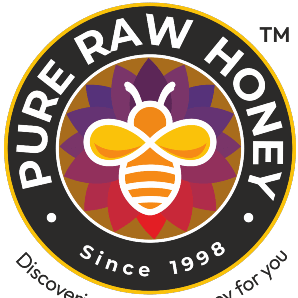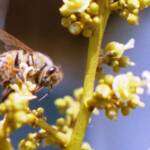Nectar
Flowers nectar is the main food for bees to create the honey. Nectar is a sugar-rich liquid produced by plants which attracts pollinating animals like mosquitoes, hoverflies, wasps, bees, butterflies etc.
How does Nectar convert into honey?
Nectar — a sugary liquid — is extracted from flowers using a bee’s long, tube-shaped tongue and stored in its extra stomach, or “crop.” While sloshing around in the crop, the nectar mixes with enzymes that transform its chemical composition and pH, making it more suitable for long-term storage.
When a honeybee returns to the hive, it passes the nectar to another bee by regurgitating the liquid into the other bee’s mouth. This regurgitation process is repeated until the partially digested nectar is finally deposited into a honeycomb.
Once in the comb, nectar is still a viscous liquid — nothing like the thick honey you use at the breakfast table. To get all that extra water out of their honey, bees set to work fanning the honeycomb with their wings in an effort to speed up the process of evaporation.
When most of the water has evaporated from the honeycomb, the bee seals the comb with a secretion of liquid from its abdomen, which eventually hardens into beeswax. Away from air and water, honey can be stored indefinitely, providing bees with the perfect food source for cold winter months.
But bees aren’t the only ones with a sweet tooth. Humans, bears, badgers and other animals have long been raiding the winter stores of their winged friends to harvest honey.
Depending upon the nectar of flowers raw honey classified into 2 main types.
- Poly floral honey- Produced from different flower nectar like forest honey.
- Mono floral honey- Produced from similar flower nectar like Jamun honey,sunflower honey etc.
Our Bees Video while Collecting nectar:
Nectar from different flowers:
- How Bees Convert Nectar to Honey



Add Comment